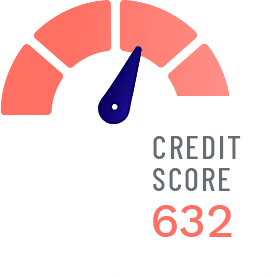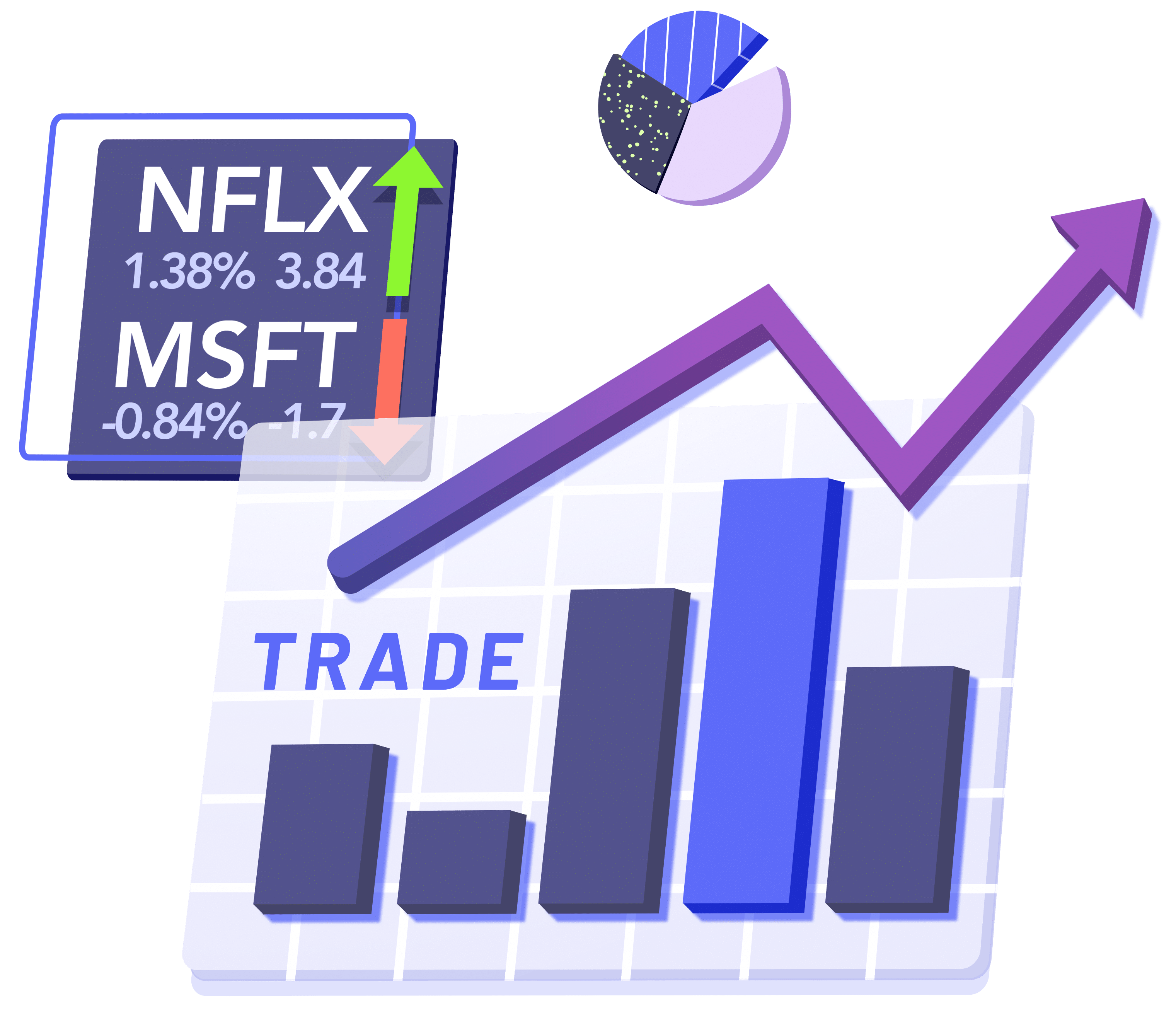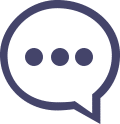| OPTIONS BEYOND HIGH SCHOOL (Short List) |
Activity |
Long-Term Game |
Comprehensive Chapter |
Short Lesson |
Interactive Calculator |
Graded Assessment |
| Research post-secondary educational options, including trade schools, certificate programs, and two- and four-year colleges |
Lesson – Career Development
Lesson – Work VS Study
| | | | | |
| Explore employment opportunities including apprenticeships, labor unions, and full- and part-time employment |
Lesson – Career Development
Lesson – Work VS Study
Lesson – How To Choose an Internship
| | | | | |
| Match their career goals, needs, and wants to the available options |
Lesson – Career Development
| | | | | |
| Apply decision-making skills to develop a plan that includes short- and long�term career goal |
Lesson – Career Development
| | | | | |
| Investigate the cost of educational options |
Lesson – Work VS Study
Lesson – Student Loans
| | | | | |
| Explore and identify types of financial assistance: scholarships, loans, Free Application for Federal Student Aid (FAFSA) |
Lesson – Work VS Study
Lesson – Student Loans
| | | | | |
| WORKPLACE REGULATIONS (Short List) |
Activity |
Long-Term Game |
Comprehensive Chapter |
Short Lesson |
Interactive Calculator |
Graded Assessment |
| Explain workplace terms, such as working hours, overtime, minimum wage, prevailing wage, per diem, workers’ compensation insurance, unemployment insurance, Social Security, and disability insurance |
Lesson – Employer and Employee Rights and Responsibilities
| | | | | |
| Compare and contrast employer and worker rights and responsibilities |
Lesson – Employer and Employee Rights and Responsibilities
| | | | | |
| Examine the role of Social Security and unemployment insurance |
Lesson – Unemployment and other programs
| | | | | |
| Recognize the role of workers compensation insurance, disability insurance, and social security for on-the-job illness or injury |
Lesson – Employer and Employee Rights and Responsibilities
| | | | | |
| BUDGETING |
Activity |
Long-Term Game |
Comprehensive Chapter |
Short Lesson |
Interactive Calculator |
Graded Assessment |
| Identify reasons to create financial goals |
Lesson – Building Wealth
Lesson – Pay Yourself First
Lesson – Preparing for Retirement
| | | | | |
| Explain the value of having a spending plan/budget |
Lesson – Budgeting
Lesson – Budgeting and Spending Strategies
Lesson – Spending and Savings Plans
Lesson – Pay Yourself First
| | | | | |
| Recognize the importance of regularly reviewing a budget |
Budget Game – Core Component
Lesson – Budgeting
Lesson – Financial Records and Receipts
| | | | | |
| Determine how savings and charitable giving fit into a budget |
Budget Game – Core Component
Lesson – Charitable Giving
Lesson – Spending and Savings Plans
Lesson – Pay Yourself First
| | | | | |
| Evaluate needs vs. wants |
Budget Game – Core Component
Lesson – Budgeting
| | | | | |
| Distinguish between fixed and variable expenses |
Budget Game – Core Component
Lesson – Budgeting
| | | | | |
| Examine various examples of opportunity costs and how they impact a budget |
Lesson – What is Opportunity Cost?
Lesson – Researching Spending
Lesson – Planning for Long Term Purchases
| | | | | |
| Examine liquidity of savings for emergencies |
Budget Game – Core Component
Lesson – Pay Yourself First
| | | | | |
| Review variables impacting a budget (e.g., inflation, unemployment, relationship changes (marriage/divorce), extreme weather) |
Lesson – Inflation
Lesson – Family Planning
Lesson – Planning for Long Term Purchases
Lesson – Preparing for Spending Shocks
| | | | | |
| Explain the importance of developing an emergency fund before planning other monetary goals |
Budget Game – Core Component
Lesson – Pay Yourself First
| | | | | |
| Reflect on the importance of revising/updating emergency funds as life changes occur |
Budget Game – Core Component
Lesson – Pay Yourself First
| | | | | |
| Explain the importance of a “pay yourself first” policy |
Budget Game – Core Component
Lesson – Pay Yourself First
| | | | | |
| Identify how small “want” purchases and buying on impulse can impact a budget |
Budget Game – Core Component
Lesson – Budgeting
Lesson – Budgeting and Spending Strategies
| | | | | |
| Explain options to balance your budget when/if there is a surplus or deficit |
Lesson – Pay Yourself First
Lesson – Budgeting and Spending Strategies
| | | | | |
| Identify outside influences that make sticking to a budget challenging (advertising, social status) |
Lesson – Spending and Savings Plans
| | | | | |
| MONEY MANAGEMENT |
Activity |
Long-Term Game |
Comprehensive Chapter |
Short Lesson |
Interactive Calculator |
Graded Assessment |
| Review different mediums of exchange and bartering |
Lesson – What is Money?
| | | | | |
| Explain the history of money |
Lesson – What is Money?
| | | | | |
| Define US Department of Treasury and US Mint |
Lesson – How Is Money Created?
| | | | | |
| Describe the role of the Federal Reserve Bank |
Lesson – What is the Federal Reserve?
| | | | | |
| Identify various banking options such as commercial banking, credit unions, etc. |
Lesson – Banks, Credit Unions, and Savings and Loans
| | | | | |
| Explain how financial institutions make money from consumer lending |
Lesson – Banks, Credit Unions, and Savings and Loans
Lesson – Debit Cards
Lesson – Credit Cards
| | | | | |
| Describe how to open and manage both manual and electronic checking and savings accounts |
Lesson – What is money?
| | | | | |
| Explain the different types of check endorsements |
Lesson – What is money?
| | | | | |
| Identify the proper use of a debit card and ATM card |
Lesson – Debit Cards
| | | | | |
| Identify the importance of maintaining good financial records (check register, electronic records and reconciliation statements) |
Lesson – What are Financial Records?
Lesson – Reconciling Accounts
Lesson – Financial Records and Receipts
| | | | | |
| Explain the features of different savings plans |
Lesson – Spending and Savings Plans
| | | | | |
| Describe overdraft protection |
Lesson – Debit Cards
| | | | | |
| CREDIT AND LOANS |
Activity |
Long-Term Game |
Comprehensive Chapter |
Short Lesson |
Interactive Calculator |
Graded Assessment |
| Identify the businesses where credit is offered: banks, credit unions, investment firms, retailers, finance companies, tax preparers, pawn shops, government agencies, colleges, consumer finance companies, credit card companies, mortgage brokers, etc. |
Lesson – Banks, Credit Unions, and Savings and Loans
Lesson – Debit Cards
Lesson – Credit Cards
Lesson – Mortgages
Lesson – Managing Debt
| | | | | |
| Describe the differences in the structure, options, and possible consequences of borrowing from the various sources |
Lesson – Using Credit
Lesson – Good Debt, Bad Debt
Lesson – Managing Debt
| | | | | |
| Identify and describe the various types of credit: credit card, student loan, car loan, personal loan, mortgages, business loan |
Lesson – Short-Term Financing
Lesson – Credit Cards
Lesson – Using Credit
Lesson – Student Loans
Lesson – Mortgages
Activity – Use the Buy vs Lease Calculator
| | | | | |
| Define secured loans (give forms and examples of collateral), unsecured loans, subsidized and unsubsidized loans, co-signed loans and joint credit vs. individual credit, balloon payments, and ARM (adjusted rate mortgage) |
Lesson – Short-Term Financing
Lesson – Mortgages
Lesson – Good Debt, Bad Debt
| | | | | |
| Review the types of loan applications and information required for approval: income; length at job; FICO (Fair Isaac Corp.) score; debt-to-loan ratio; collateral; down payment; co-signers or guarantors |
Lesson – Credit Reports
Lesson – Credit Cards
Lesson – Using Credit
Lesson – Mortgages
| | | | | |
| Explore the FAFSA (Free Application for Federal Student Aid) process for borrowing money for post-secondary education |
Lesson – Student Loans
| | | | | |
| Define default/foreclosure/repossession, overspending, bankruptcy, poor credit decisions |
Lesson – Bankruptcy
Lesson – Debt Management Services
Lesson – Consolidating Debt
Lesson – Debt Negotiation
| | | | | |
| Discuss the pitfalls of failing to compare and evaluate interest rates, length of the loan, and total cost of the loan over the payment period |
Budget Game – Core Component
Lesson – Importance of Interest Rates
Lesson – Using Credit
Activity – Use the Credit Card Payments Calculator
Activity – Use the Compound Interest Calculator
| | | | | |
| Describe the difference between a debit card and credit card |
Budget Game – Core Component
Lesson – Debit Cards
Lesson – Credit Cards
| | | | | |
| Explain the advantages vs. disadvantages of using a credit card |
Budget Game – Core Component
Lesson – Credit Cards
| | | | | |
| Explain how balance transfers affect credit |
Lesson – Bankruptcy
Lesson – Debt Management Services
Lesson – Consolidating Debt
Lesson – Debt Negotiation
| | | | | |
| Discuss the true cost of purchases when making only the minimum payment on a credit card statement |
Lesson – Credit Cards
Activity – Use the Credit Card Payments Calculator
| | | | | |
| Identify various options associated with credit cards (prepaid cards, store credit cards, bank credit cards). |
Lesson – Using Credit
Lesson – Credit Cards
| | | | | |
| Define terms associated with credit cards (cash advances, credit limit, minimum amount due, grace period, late fee, finance charge) |
Lesson – Using Credit
Lesson – Credit Cards
| | | | | |
| Identify components associated with cash advances |
Lesson – Credit Cards
| | | | | |
| Develop the ability to read, understand, and interpret credit card bills/statements |
Budget Game – Core Component
Lesson – Using Credit
| | | | | |
| Develop skills necessary to avoid identity theft and maintain identity security |
Lesson – Protecting Against Fraud
| | | | | |
| Identify and promote good practices for privacy, security, and online safety |
Lesson – Protecting Against Fraud
| | | | | |
| Identify strategies to avoid identity theft |
Lesson – Protecting Against Fraud
| | | | | |
| Identify different kinds of consumer fraud |
Lesson – Protecting Against Fraud
Lesson – Consumer rights and responsibilities
| | | | | |
| Determine what steps to take if victimized by consumer fraud |
Lesson – Protecting Against Fraud
| | | | | |
| INTEREST |
Activity |
Long-Term Game |
Comprehensive Chapter |
Short Lesson |
Interactive Calculator |
Graded Assessment |
| Describe what Annual Percentage Rate (APR) is, how it is used, and its importance |
Lesson – Using Credit
Lesson – Importance of Interest Rates
Activity – Use the Compound Interest Calculator
| | | | | |
| Define terms and concepts associated with simple/compound interest, APR, late fees, initial fees, non-payment fees, and other information associated with the cost of credit |
Lesson – Using Credit
Lesson – The Importance of Interest Rates
Activity – Use the Compound Interest Calculator
| | | | | |
| Identify various sources of credit and how large purchases (vehicles, homes, furniture) are usually financed |
Activity – Use the Buy vs Lease Calculator
Activity – Use the Home Budgeting Calculator
Lesson – Mortgages
Lesson – Planning Long-Term Purchases
Lesson – Short-Term Financing
| | | | | |
| Define fixed vs. variable interest rates |
Lesson – Mortgages
| | | | | |
| Explain strategies for earning interest and the benefits of doing so |
Lesson – Investing Strategies
Activity – Use the Investment Return Calculator
Activity – Use the Net Present Value Calculator
| | | | | |
Identify ways to reduce the cost of borrowing money
• Making a larger down payment
• Shopping for lower interest rates
• Borrowing for a shorter period of time
|
Lesson – Using Credit
Lesson – Credit Cards
Lesson – Mortgages
Lesson – Importance of Interest Rates
Activity – Use the Compound Interest Calculator
| | | | | |
| Explain FICO (Fair Isaac Corp.), which started the credit score system, and why is it important |
Lesson – Credit Reports
| | | | | |
| Identify the three credit reporting agencies (Equifax, Transunion, Experian) and their impact on your credit score |
Lesson – Credit Reports
| | | | | |
| Describe the implications of a low vs. high credit score for securing a loan |
Lesson – Credit Reports
Lesson – Mortgages
Lesson – Using Credit
| | | | | |
| Explain the steps to improve one’s credit score |
Budget Game – Core Component
Lesson – Credit Reports
| | | | | |
| Recognize the factors that have a negative impact on credit score |
Budget Game – Core Component
Lesson – Credit Reports
| | | | | |
| Explain the importance of tracking your credit score on a regular basis |
Budget Game – Core Component
Lesson – Credit Reports
| | | | | |
| Explain the consequences of paying only the minimum amount due on credit cards. (Generally, the longer the period of time for repayment, the greater the total cost of the loan and therefore the real price of the product or service purchased on credit.) |
Lesson – Credit Cards
Activity – Use the Credit Card Payments Calculator
| | | | | |
| INVESTING |
Activity |
Long-Term Game |
Comprehensive Chapter |
Short Lesson |
Interactive Calculator |
Graded Assessment |
| Explain what motivates people to invest (increase assets, produce wealth, and prepare for retirement) |
Stock Game – Core Component
Investing101 Certification
Lesson – Why invest in Stocks?
Lesson – Building a Diversified Portfolio
Lesson – Building Wealth
| | | | | |
| Explore different investment strategies for various investment needs |
Investing101 Certification
Lesson – Investing Strategies
Lesson – Building a Diversified Portfolio
| | | | | |
| Distinguish between investing and savings and how each satisfies financial goals |
Stock Game – Core Component
Investing101 Certification
Budget Game – Core Component
Lesson – Pay Yourself First
Lesson – What is Wealth?
Lesson – Preparing for Retirement
| | | | | |
| Explain the long-term value of investing |
Lesson – Time Value of Money
Lesson – Inflation
Lesson – Preparing for Retirement
Lesson – Building Wealth
Lesson – What is Wealth?
Activity – Use the Compound Interest Calculator
Activity – Use the Net Worth Calculator
| | | | | |
| Examine commission charges and their impact on the cost of buying and selling securities |
Stock Game – Core Component
Investing101 Certification
Lesson – What is a Brokerage?
| | | | | |
| Compare the differences among stocks, bonds, and mutual funds |
Stock Game – Core Component
Investing101 Certification
Lesson – What is a Stock?
Lesson – What are Bonds?
Lesson – What is a Mutual Fund?
| | | | | |
| Recognize that different stocks are traded on specific stock exchanges (NYSE, Euronext, NASDAQ) |
Stock Game – Core Component
Investing101 Certification
Lesson – What is a Stock?
Lesson – Getting (and understanding) stock quotes
Lesson – What is the New York Stock Exchange?
| | | | | |
| Analyze major indices that reflect aspects of the economic climate (S&P 500 and Dow Jones) |
Stock Game – Core Component
Investing101 Certification
Lesson – What is the Dow Jones Industrial Average?
| | | | | |
| Define such terms as bear, bull, and volatile markets |
Investing101 Certification
Lesson – Understanding Price Movements
| | | | | |
| Explain why and how a company goes public (selling shares to the public) |
Investing101 Certification
Lesson – What is a Stock?
Lesson – Types of Companies
Lesson – Issuing stock and dividends
| | | | | |
| Explain stockholders rights |
Lesson – What is a Stock?
Lesson – Issuing Stock and Dividends
Lesson – Dividends and Changes of Ownership
| | | | | |
| Describe why stocks have highest growth potential and risk potential |
Investing101 Certification
Lesson – Why invest in Stocks?
Lesson – Investing Strategies
Lesson – Building a Diversified Portfolio
| | | | | |
| Analyze risk and return potential |
Investing101 Certification
Lesson – Why invest in Stocks?
Lesson – Investing Strategies
Lesson – Building a Diversified Portfolio
Lesson – Risk
Activity – Use the Investment Return Calculator
| | | | | |
| Demonstrate ability to read stock market tables: stock symbol, high, low, opening and closing price, net change, volume, and P/E (price-to-earnings) ratio |
Stock Game – Core Component
Lesson – Getting (and understanding) stock quotes
Investing101 Certification
| | | | | |
| Determine capital gains/losses (selling price – purchase price) x shares of stock = capital gain or loss |
Stock Game – Core Component
Investing101 Certification
Lesson – What is a Brokerage?
| | | | | |
| Recognize the factors that influence stock prices (news, economy, new products, bankruptcy) |
Stock Game – Core Component
Investing101 Certification
Lesson – Understanding Price Movements
| | | | | |
| Recognize the value of diversification and moderate risk |
Stock Game – Core Component
Investing101 Certification
Lesson – Risk
Lesson – Building a Diversified Portfolio
| | | | | |
| Distinguish among different mutual fund packages (money market, equity and bond funds, family of funds) |
Investing101 Certification
Lesson – What is a Mutual Fund?
| | | | | |
| Define the components of bonds, including principal, price, coupon/interest rates, payments to lender, face value, and maturity |
Investing101 Certification
Lesson – What are Bonds?
| | | | | |
| Define the different types of bonds, such as treasury bonds, municipal bonds, and corporate bonds |
Investing101 Certification
Lesson – What are Bonds?
| | | | | |
| Recognize factors that influence bond prices: rates, inflation, economic conditions |
Investing101 Certification
Lesson – What are Bonds?
Lesson – Importance of Interest Rates
Lesson – Inflation
Lesson – Fiscal Policy Explained
Lesson – Government Impact on the Economy
| | | | | |
| Recognize how real estate and collectibles (antiques, coins, sports cards, comic books) are investment opportunities |
Investing101 Certification
Lesson – Investing Strategies
| | | | | |
| Define the various long-term savings plans available for consumers (529, 403b, 401k, Gerber Plan, employment match fund, pension, tax deferred annuity, and Roth IRA) |
Investing101 Certification
Lesson – Investing Strategies
Lesson – Preparing for Retirement
Lesson – What is Wealth?
Lesson – Building Wealth
| | | | | |
| CONSUMER OPTIONS AND PROTECTIONS |
Activity |
Long-Term Game |
Comprehensive Chapter |
Short Lesson |
Interactive Calculator |
Graded Assessment |
| Explain the costs associated with owning a car |
Lesson – Buying a Car
Activity – Use the Car Loans Calculator
Lesson – Car Insurance
| | | | | |
| Evaluate the methods of purchasing a car |
Lesson – Buying a Car
Activity – Use the Car Loans Calculator
Lesson – Car Insurance
| | | | | |
| Recognize the difference between the leasing and ownership options (used and new) |
Activity – Use the Buy vs Lease Calculator
Lesson – Research Spending
| | | | | |
| Analyze comparative costs of different residential locations |
Budget Game – Core Component
| | | | | |
| Describe the steps, terms, and legalities of leasing an apartment |
Lesson – Renter’s Insurance
Lesson – What makes a contract valid?
| | | | | |
| Explain the process and considerations of purchasing a home |
Lesson – Mortgages
Activity – Use the Buy vs Lease Calculator
Activity – Use the Home Budgeting Calculator
| | | | | |
| Compare renting to owning property |
Activity – Use the Buy vs Lease Calculator
| | | | | |
| Identify reasons and motivation for purchasing various consumer products |
Budget Game – Core Component
Lesson – Pay Yourself First
| | | | | |
| Describe the power of advertisements affecting consumer decisions |
Lesson – Spending and Savings Plans
Lesson – Classifying Products and Services
Lesson – Analyzing Consumer Behavior
| | | | | |
| Identify purchasing strategies, including discounts, brick and mortar vs. online, and comparative shopping (unit price) |
Budget Game – Core Component
Lesson – Research Spending
Lesson – Budgeting
Lesson – Budgeting and Spending Strategies
Lesson – Spending and Savings Plans
| | | | | |
| Define brand name vs generic products and explain how price is affected |
Budget Game – Core Component
Lesson – Research Spending
| | | | | |
| Evaluate effective strategies for dealing with a consumer problem |
Lesson – Consumer rights and responsibilities
| | | | | |
| Describe ways to recognize and prevent consumer fraud |
Lesson – Protection Against Fraud
| | | | | |
| Describe ways to prevent identity theft |
Lesson – Protection Against Fraud
| | | | | |
| Describe the legal remedies available to consumers such as lemon laws for cars, Better Business Bureau (BBB),the New York State Attorney General’s Bureau of Consumer Frauds & Protection, FTC’s Bureau of Consumer Protection, and Small Claims Court |
Lesson – Consumer rights and responsibilities
Lesson – Protection Against Fraud
| | | | | |
| INSURANCE |
Activity |
Long-Term Game |
Comprehensive Chapter |
Short Lesson |
Interactive Calculator |
Graded Assessment |
| Define risk and explain the methods of risk management |
Lesson – Risk
Lesson – Investing Strategies
| | | | | |
| Explain the concept of shared risk |
Lesson – Risk
Lesson – Health Insurance
| | | | | |
| Calculate the cost and benefits of insurance and how degrees of risk affect the cost of insurance |
Lesson – Car Insurance
Lesson – Health Insurance
Lesson – Life Insurance
Lesson – Home Owner’s Insurance
Lesson – Renter’s Insurance
Lesson – Risk
| | | | | |
| Explain the consequences of not carrying insurance |
Lesson – Car Insurance
Lesson – Health Insurance
Lesson – Life Insurance
Lesson – Home Owner’s Insurance
Lesson – Renter’s Insurance
Lesson – Risk
| | | | | |
| Determine insurance needs, decide what is affordable, and compare costs |
Lesson – Car Insurance
Lesson – Health Insurance
Lesson – Life Insurance
Lesson – Home Owner’s Insurance
Lesson – Renter’s Insurance
| | | | | |
| Define insurance terms such as premium, coverage, deductible, and claim |
Lesson – Car Insurance
Lesson – Health Insurance
Lesson – Life Insurance
Lesson – Home Owner’s Insurance
Lesson – Renter’s Insurance
| | | | | |
| Identify factors affecting cost of insurance such as age, gender, marital status, type of car, cost of repairs, mileage, location, law enforcement, driving record and claims made |
Lesson – Car Insurance
Lesson – Health Insurance
Lesson – Life Insurance
Lesson – Home Owner’s Insurance
Lesson – Renter’s Insurance
| | | | | |
| Explore optional coverages such as bodily injury, liability, comprehensive, collision, and umbrella coverage |
Lesson – Car Insurance
Lesson – Health Insurance
Lesson – Life Insurance
| | | | | |
| Explain the consequences of not having required insurance |
Lesson – Risk
| | | | | |
| Explore strategies to reduce the cost of vehicle insurance, such as increasing the deductible, reducing coverage, garaging the vehicle, installing alarms, taking a driver education course, or avoiding submitting small claims |
Lesson – Car Insurance
| | | | | |
| Explain the purpose and need for health insurance |
Lesson – Health Insurance
| | | | | |
| Explain the purpose and need for life insurance |
Lesson – Life Insurance
| | | | | |
| Explain the difference between term insurance and whole life insurance |
Lesson – Life Insurance
| | | | | |
| Define life insurance terms, such as death benefit, beneficiary, cash value, and face-value |
Lesson – Life Insurance
| | | | | |
| Explain the purpose and need for property insurance |
Lesson – Homeowner’s Insurance
Lesson – Rental Agreements and Homeowner’s
| | | | | |
| Define terms of property insurance, such as: renters, homeowners, and mortgage insurance |
Lesson – Renter’s Insurance
Lesson – Homeowner’s Insurance
| | | | | |
| Explore additional insurance options, such as: travel, mobile and electronic devices, disability, and long-term care |
Lesson – Health Insurance
Lesson – Life Insurance
| | | | | |
| Explore consequences for opting out of insurance protection |
Lesson – Risk
| | | | | |
| TAXES |
Activity |
Long-Term Game |
Comprehensive Chapter |
Short Lesson |
Interactive Calculator |
Graded Assessment |
| Recognize the reasons that taxes are collected |
Lesson – Taxation Overview
Lesson – Government impact on the economy
Lesson – Fiscal Policy Explained
| | | | | |
| Explain how municipalities and federal government collect and utilize taxes |
Lesson – Taxation Overview
Lesson – Government impact on the economy
Lesson – Fiscal Policy Explained
| | | | | |
| Describe the advantages of payroll or employment taxes |
Lesson – Payroll Best Practices
| | | | | |
| Define exemptions and dependents and explain how they affect income taxes |
Lesson – Common Tax Deductions
Lesson – Common Tax Additions
| | | | | |
| Compare adjustable gross income and taxable income |
Lesson – Tax Filing and the Form 1040
| | | | | |
| Explain why sales taxes vary by location and how they impact consumerism |
Lesson – Sales Tax
| | | | | |
| Define other types of taxes and their purpose, such as property taxes, luxury taxes, estate taxes |
Lesson – Taxation Overview
Lesson – Sales Tax
| | | | | |
| Explain income taxes and how they are reported and calculated. |
Lesson – Income and Compensation
Lesson – Tax Filing and the Form 1040
Lesson – When to hire a tax professional
| | | | | |
| Distinguish among tax forms such as 1040, 1040EZ, and 1099 |
Lesson – Taxation Overview
Lesson – Tax Filing and the Form 1040
| | | | | |
| Distinguish between standard and itemized deductions |
Lesson – Taxation Overview
Lesson – Tax Filing and the Form 1040
Lesson – Common Tax Deductions
Lesson – Common Tax Additions
| | | | | |
| Explain options available to taxpayers in reporting to the IRS |
Lesson – Taxation Overview
Lesson – Tax Filing and the Form 1040
Lesson – Common Tax Deductions
Lesson – Common Tax Additions
Lesson – Tax Audits
| | | | | |
| Define different deductions, such as: Medicare, Social Security, unemployment, and disability |
Budget Game – Core Component
Lesson – Income and Compensation
| | | | | |
| Explain how these tax-funded programs benefit employees |
Lesson – Unemployment and other programs
| | | | | |
| Explain employers’ responsibility for each of the above |
Lesson – Employer and Employee Rights and Responsibilities
| | | | | |












